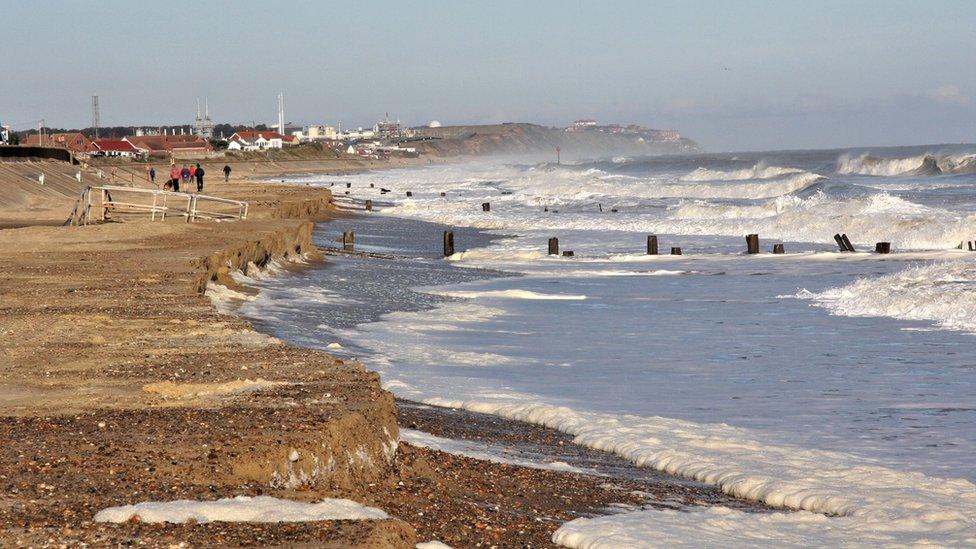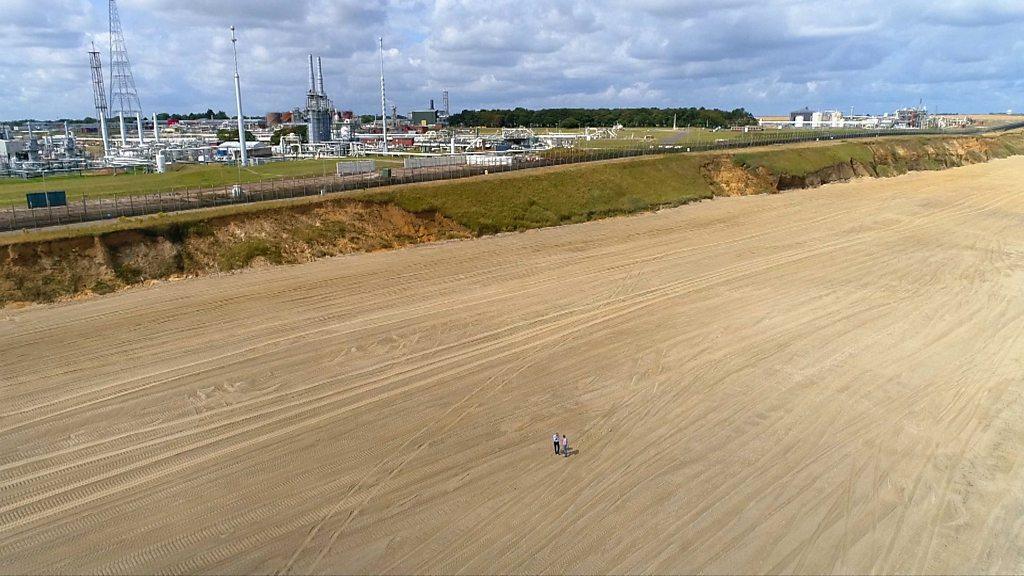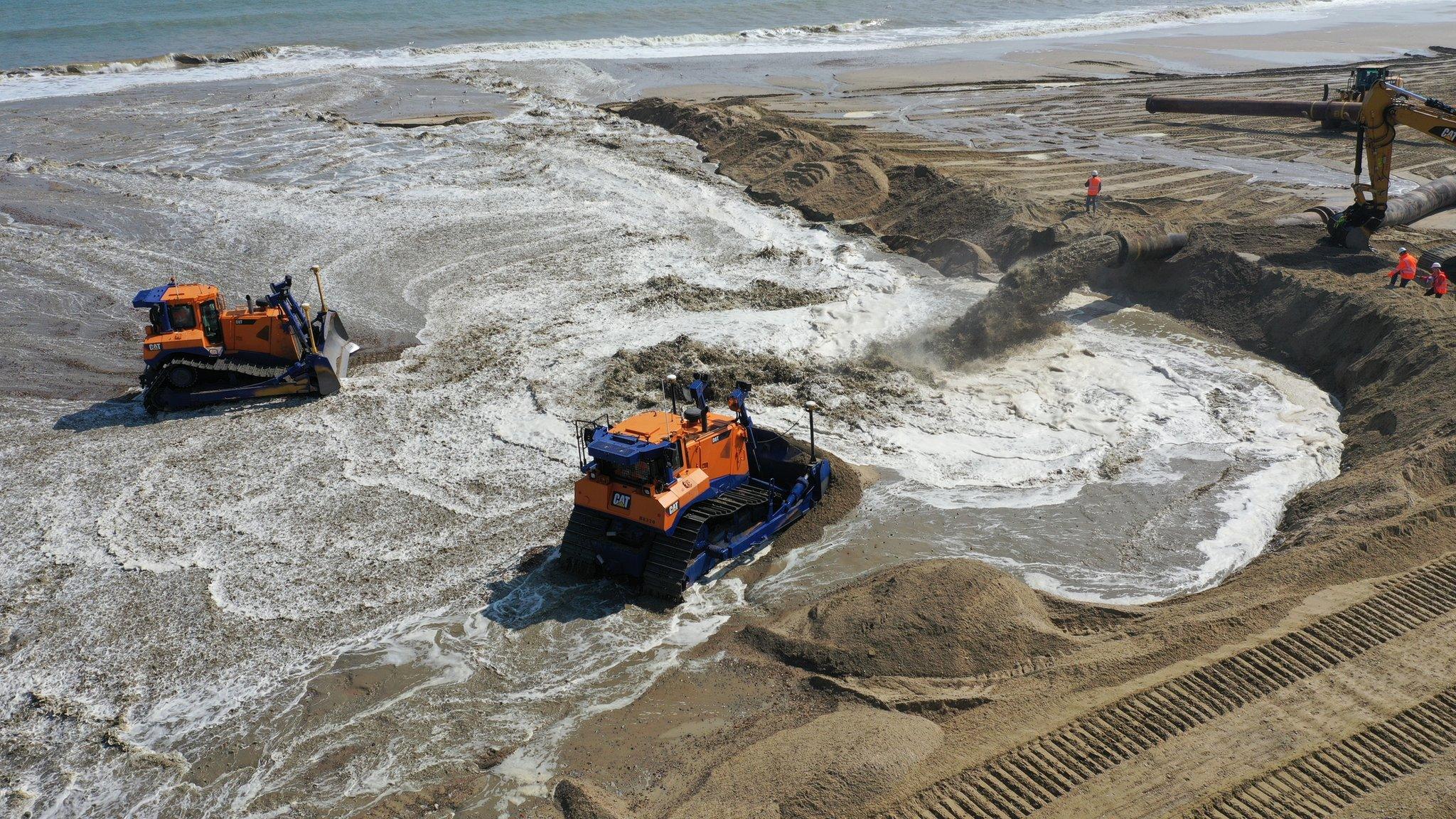Sand loss at £22m beach in Norfolk was 'expected'
- Published

A sand barrier was created to protect against coastal erosion
The designers of a £22m sand barrier against coastal erosion have said it is "normal" for new beaches to wash away.
The sandscaping scheme, from Walcott to Bacton in Norfolk, raised the beach by up to seven metres (23ft).
People living nearby said it was "dramatic" and "scary" to see a lot of the sand had disappeared during storms over the weekend, exposing rocks below.
Royal HaskoningDHV said the beaches would build back up in calmer weather.
A spokeswoman said: "Following the completion of the sandscaping project, the sand body is adjusting to a more natural profile.
"This may look like the sand has disappeared, however, this is part of the normal dynamic behaviour of beaches under varying weather conditions."
Nearly two million cubic metres of sand were shifted to the stretch of coast
The 6km-long dune was completed in the summer with the aim of protecting Bacton Terminal, which supplies one third of the UK's gas but is just metres from a cliff edge.
Its cost was mainly covered by the Bacton operators, with £5m from the Environment Agency and £500,000 from North Norfolk District Council.
Maurice Gray, from Walcott, said: "I was down there at high tide. It was quite dramatic to see how much sand had disappeared. It's quite frightening, really."
Photographer Mike Page said: "The extremities of the sand have disappeared after just one storm, forming a small cliff.
"The sand is moving along the coast. I'm sure it'll all be gone within two years."
A North Norfolk District Council spokeswoman said: "Even with this high tide event, the beach immediately in front of the sea wall remains four or five metres above the height prior to the works.
"The 'new' beach is therefore absorbing the wave energy as designed.
"Any loss of sediment could be replaced with future tides."

The sandscaping scheme raised the beach by up to seven metres (23ft)

There was visibly less sand after storms over the weekend
- Published8 September 2019

- Published18 July 2019
